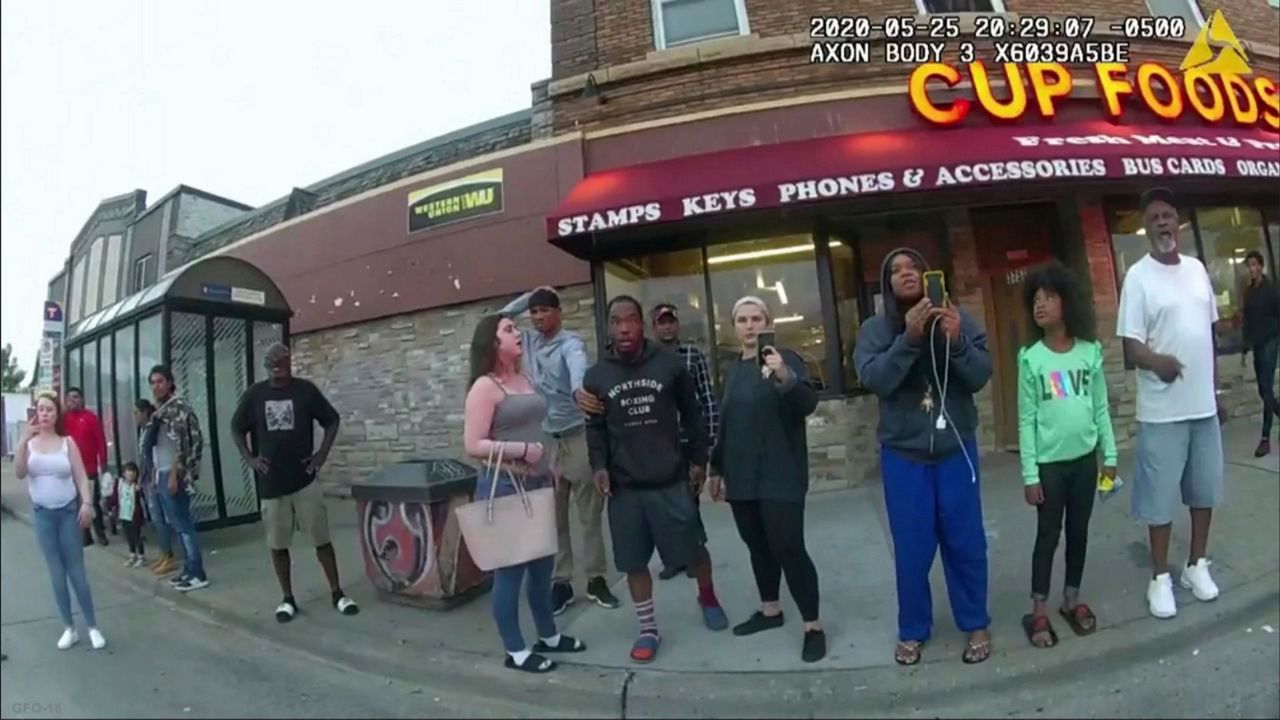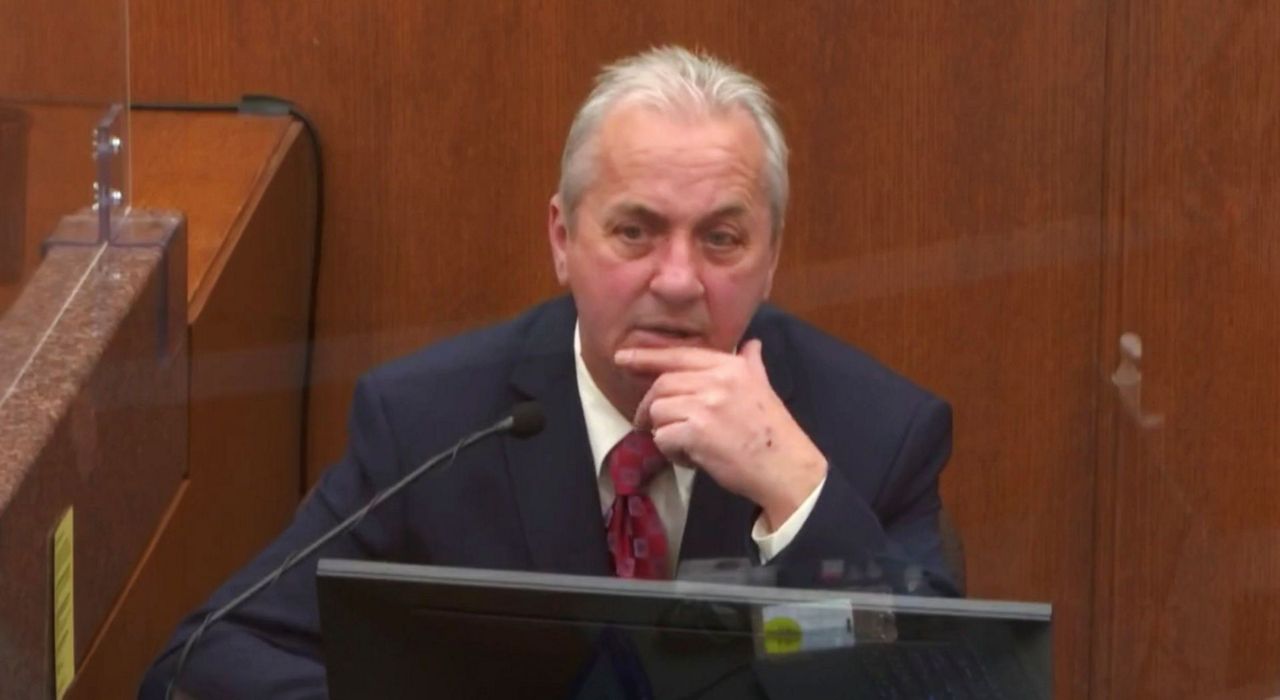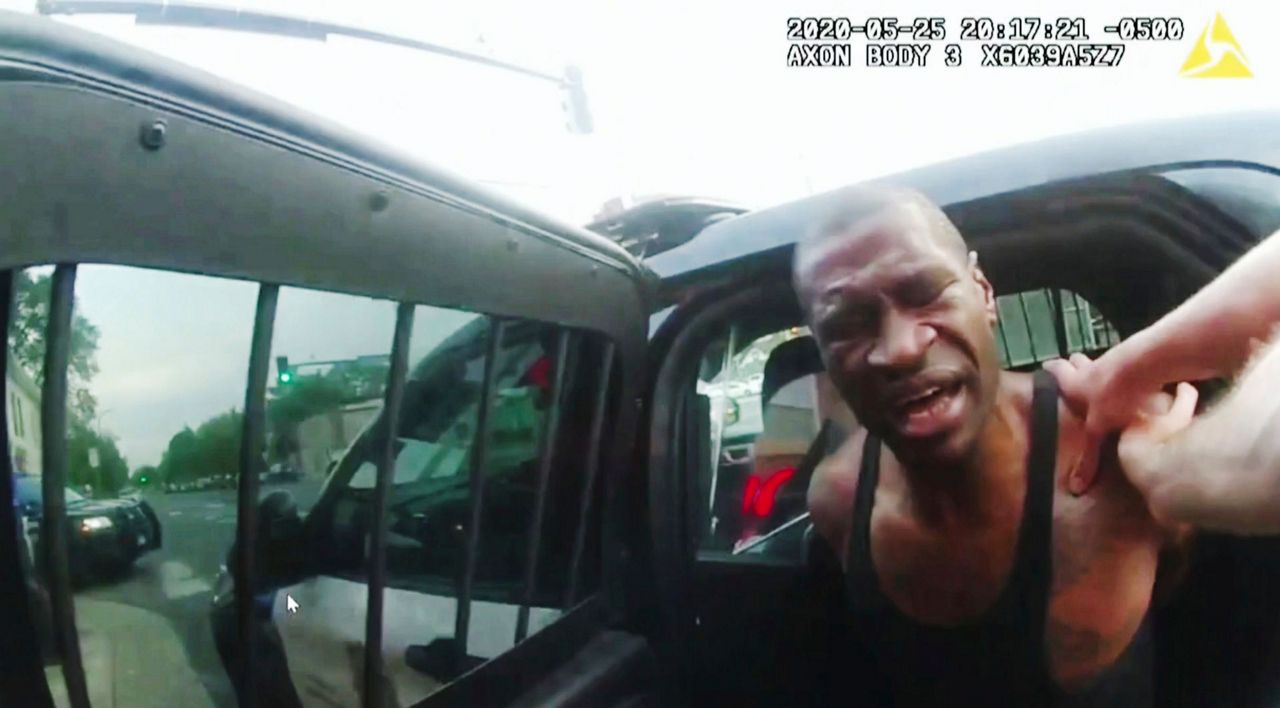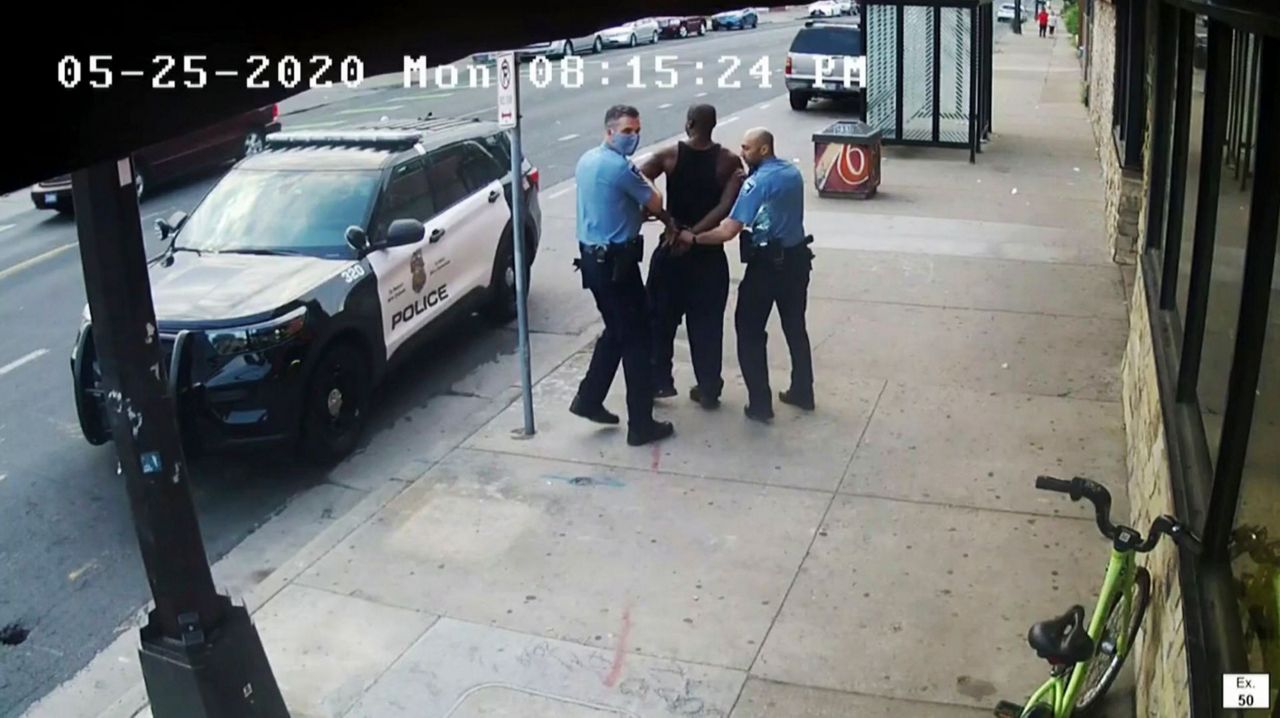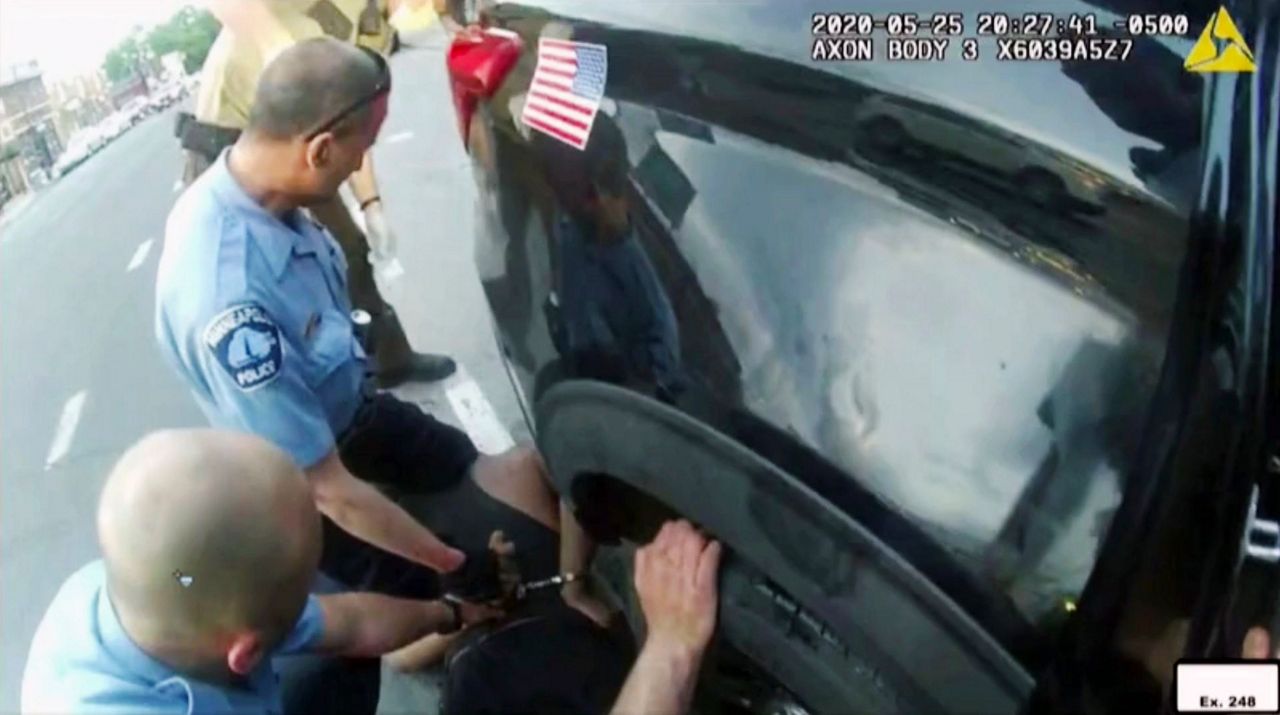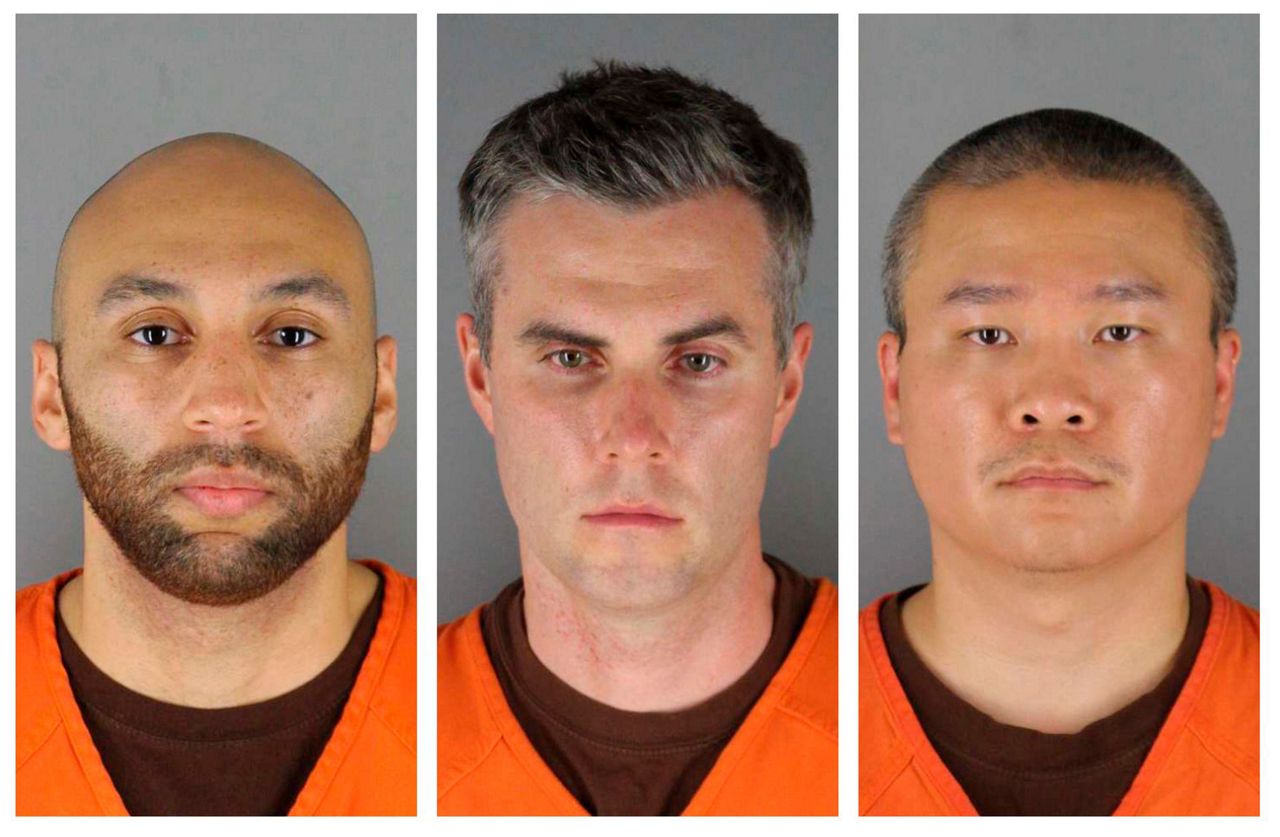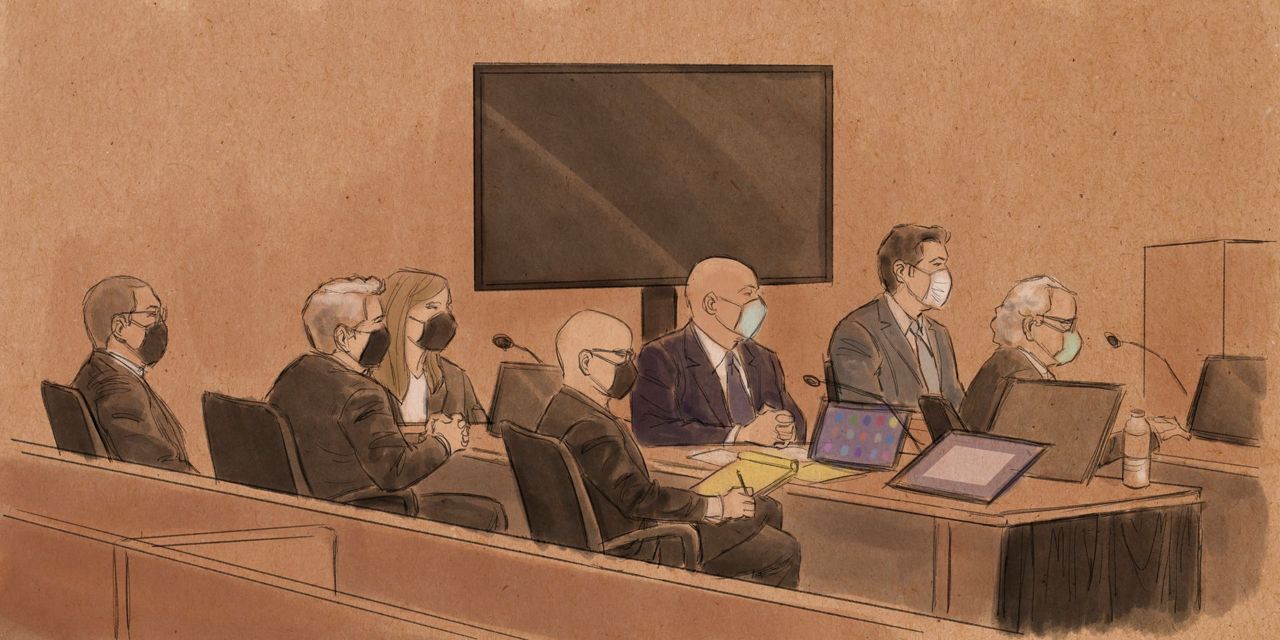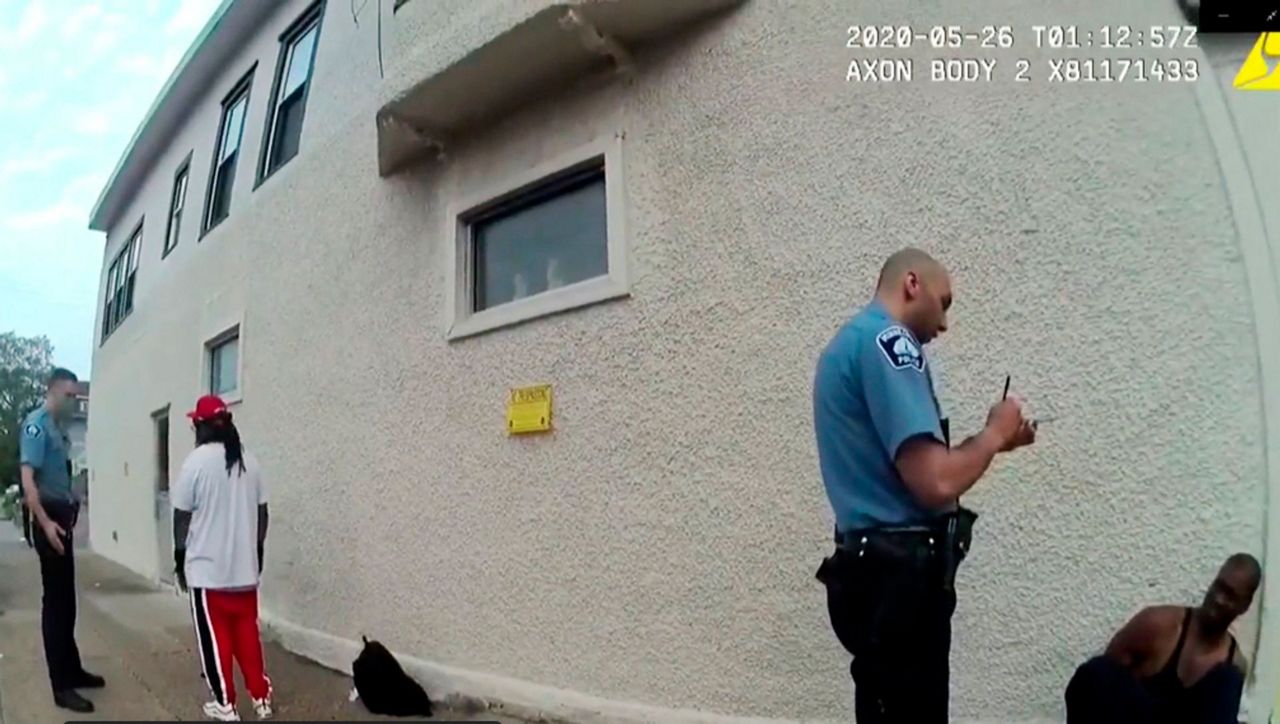ST. PAUL, Minn. (AP) — A woman who was 17 when she came upon Minneapolis police pinning George Floyd to the street testified Friday at a federal trial for three officers that she knew instantly the Black man was “in distress," as he screamed in pain and shouted that he couldn't breathe.
Alyssa Funari, now 19, said that when she drove past officers on top of a man in the street on May 25, 2020, she got out of her car and started recording because she had a “gut feeling” something was wrong.
“I instantly knew that he was in distress. ... He was moving, making facial expressions that he was in pain,” she said. “He was telling us that he was in pain.”
Former Officers J. Alexander Kueng, Thomas Lane and Tou Thao are charged with violating Floyd's civil rights while acting under government authority. All three are accused of depriving Floyd, 46, of medical care while he was handcuffed and facedown as Officer Derek Chauvin pressed his knee onto Floyd's neck for 9 1/2 minutes. Kueng knelt on Floyd’s back and Lane held down his legs while Thao kept bystanders back.
Kueng and Thao are also accused of failing to intervene to stop Floyd's killing, which triggered protests worldwide and a reexamination of racism and policing.
Prosecutors told the court that they will rest their case Monday after three weeks of testimony from law enforcement officials, doctors and eyewitnesses.
The announcement came after prosecutors showed snippets of bystander and police video with timelines and transcripts as Matthew Vogel, an FBI special agent, described what the materials.
The timelines and transcripts are meant to help jurors sort out sometimes confusing videos that show a chaotic scene from various angles and capture different pieces of the officers' conversations, Floyd's fading cries of, “I can't breathe,” and frantic pleas by bystanders to check his pulse.
The footage included video of Kueng and Lane talking to a sergeant about what happened, but saying incorrectly that Floyd was still breathing when paramedics arrived, and mentioning nothing about their inability to find Floyd's pulse. The head of the Minneapolis homicide unit testified Thursday that he noticed similar problems with what they told him.
On-cross examination, Thao's attorney, Robert Paule, noted that some of the dialogue in the videos can't be made out — or that people might hear things differently. He asked about a statement from Floyd about drugs that was a matter of dispute Chauvin's state murder trial last year. Attorneys had argued about whether Floyd yelled, “I ate too many drugs” or “I ain’t do no drugs." Vogel said: “It was unintelligible to me.”
One of the prosecution's key arguments has been that the officers were trained to provide medical aid in emergencies, and that Floyd's situation had become so serious as police held him down that bystanders — even children with no medical training — knew something was wrong.
When Funari was on the stand, prosecutors played her videos, which show Floyd eventually growing quiet and motionless. Funari yells at officers that Floyd isn't moving.
“I observed that over time he was slowly being less vocal and he was closing his eyes," she testified. "He wasn’t able to tell us that he was in pain anymore. He was just accepting it.”
Funari said she did not see Thao provide any medical assistance to Floyd. She testified that she saw Kueng check Floyd's pulse twice. When prosecutor Manda Sertich tried to ask if Funari saw Lane provide medical aid, she was met with an objection.
On cross-examination, Paule said Thao was closer to the crowd and that at times, the officers and Floyd were behind him. Paule said Thao was mostly watching the bystanders, whom Funari said were getting “more desperate," and was trying to keep them on the curb.
He asked Funari if there was a chance Thao didn’t know what was going on behind him. Funari said, “No ... you could hear it.”
Earlier Friday, the chair of the Minnesota agency that sets licensing standards for police officers testified that the three officers would have received training about constitutional rights and on providing first aid.
Kelly McCarthy, chief of police in Mendota Heights and chair of Minnesota Police Officers Standards and Training, also said officers are specifically taught to reposition someone who is restrained facedown, to ensure they can breathe. Asked why, she replied, "There were enough in-custody deaths that we needed to have a learning objective on it.”
Kueng, who is Black, Lane, who is white, and Thao, who is Hmong American, are charged with willfully depriving Floyd of his constitutional rights while acting under government authority. The charges allege that the officers’ actions resulted in Floyd’s death.
Chauvin, who is white, was convicted of murder and manslaughter in state court last year and later pleaded guilty to a federal civil rights charge.
Lane, Kueng and Thao also face a separate state trial in June on charges alleging that they aided and abetted murder and manslaughter.
___
Find AP’s full coverage of the killing of George Floyd at: https://apnews.com/hub/death-of-george-floyd
Copyright 2022 The Associated Press. All rights reserved. This material may not be published, broadcast, rewritten or redistributed without permission.



